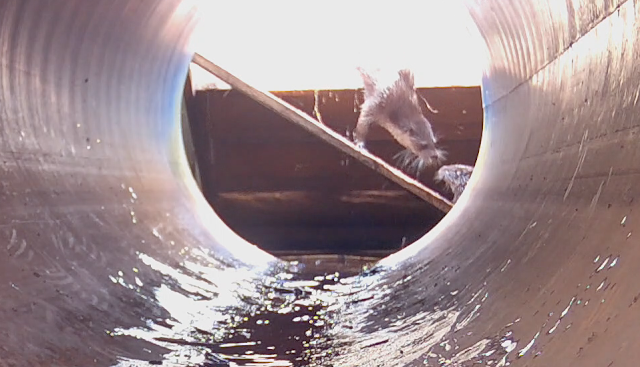National nest box week starts each year on St Valentine's Day so it is already long gone. I had cleared my boxes of the old nests before then and birds are now busy building new ones. Last year I had 26 boxes. Checking them earlier this year I found 10 were empty and three nests had been started but not completed (two tits and one tree sparrow). Another two nests were abandoned with five eggs and nine eggs respectively. Both were blue tit nests and I suspect one parent from each at least had been taken by the sparrowhawk. This is the nest from the box with nine eggs.
I read recently that cuttlefish can pass the Stanford Marshmallow Test, that is they can forgo instant gratification for a delayed greater reward. Obviously the same is not true of sparrowhawks as he would have been better off letting the parents raise their young and then eating the fledglings, but perhaps he was just hungry.
Ten boxes looked as though they had seen successful nesting - four tree sparrow, one robin, three blue tit and two great tit. And the final box had been occupied by wasps. I remember watching them last summer, and noticing that the wasps were coming out of the back as well. Here is the wasp nest.
And when I removed it I found they had chewed away the back of the box. I have rebuilt it with a new back.
I would have thought this box was too small for a wasp nest. It may be that they moved on to a larger nest nearby (as hornets do, for instance) and certainly the nest was abandoned by mid summer.
After noticing lots of fights over ownership of a tree sparrow box opposite my front door I made two more and put them up close by. Within minutes both had been claimed by chirruping sparrows, proving perhaps that there is a local housing shortage. If both end up being used I'll add a few more to this group for next year.



























































